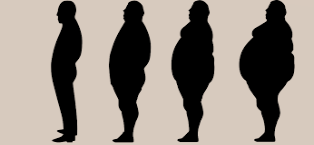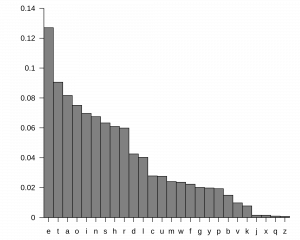As the years went by, what started as a skinny 25-40 page document has gradually bloated to over 150 pages before anyone realized it. Let's face it: your chemical hygiene plan (CHP) is overweight. And the problem isn't just cosmetic. When many people see a policy document that hefty, their eyes glaze over — nobody wants to read it. And when you have a CHP that nobody reads, you have a lab safety problem.
For a chemical hygiene plan to be effective, it needs to be a living document that encourages readership, something that employees or students can easily understand and agree to follow.
It's time to put your CHP on a diet. Not South Beach or Weight Watchers — what you need is the Laboratory Safety Institute's breakthrough CHP Flab Roller! The Flab Roller is designed to suck the fat out of your plan in 3 easy steps:
1. Cut the excess

Once the flab has been removed, all that should be left is: 1) what you must do and 2) what you should do.
One of the places where CHPs pack on some pounds is when policy and rules get mixed with instruction and training. The CHP is not intended to be a tutorial explaining why colligative properties affect vapor pressure, boiling point, freezing point and osmotic pressure. (And yes, we have seen this in a CHP.) Put tutorials in a separate tutorial document.
One of the advantages of having an electronic CHP is that you can create hyperlinks to tutorials and explanations. In a written CHP, you can refer to a companion tutorial document.
Suggestion: Use an appendix with additional information numbered to correspond with policies, but preceded by an "A". For example, put supporting material for section 1.1.2 in an appendix labeled A1.1.2.
Want to lose more weight? All you need to do is...
2. Push yourself away from the table

Tables and charts can add richness and life to your CHP. But they should serve a purpose. With each diagram, ask yourself, why am I including this? If it's just to "break up the text," or if the point it makes can easily be expressed with a short sentence, leave it out. Push all those tables, charts, and lists that are not absolutely essential into appendices (with hyperlinks) or into the tutorial document.
3. Back to lab safety basics

Focus on the most important aspects of a hygiene plan. The eight required elements in a CHP are:
- Standard operating procedures
- Determination and implementation of control measures
- Ensuring that fume hoods and safety equipment are functioning properly
- Information and training
- Circumstances requiring prior approval
- Medical consultation and examination
- Personnel responsible for the implementation of the CHP
- Additional precautions with particularly hazardous substances
The employer needs to describe how all of these are to be addressed. The Laboratory Safety Institute recommends that you work with your chemial hygiene committee (if you have one) to identify the information in your plan that is relevant to these elements. Then divide this information into 12 roughly equal portions. For each of the portions, ask a member or members of the committee to create a one-page summary. The goal is to reduce the document to 12 one-page summaries. These summaries can be filled with hyperlinks to the relevant sections of the CHP.
Now, using these one-page summaries, create 11" x 17" posters summarizing the most important points. Post one poster each month on your lab safety bulletin board.
Congratulations. You've slimmed down your chemical hygiene plan by removing excess tutorials, tables and charts. You've created a concise 12-page summary and a set of companion posters. And your colleagues will have a monthly reminder of your organization's most important chemical purchasing, storage, use, disposal and clean-up procedures and practices.
If you would like to learn more, get a copy of our Model Chemical Hygiene Plan. Or check out our upcoming How to Be a More Effective Chemical Hygiene Officer courses.

